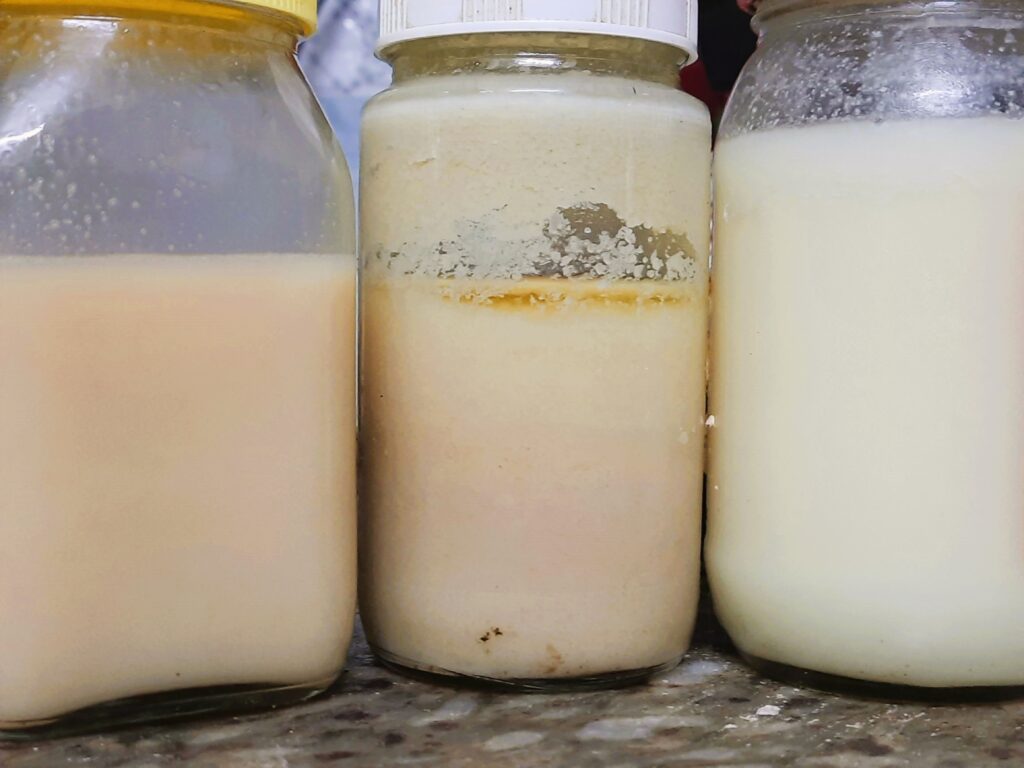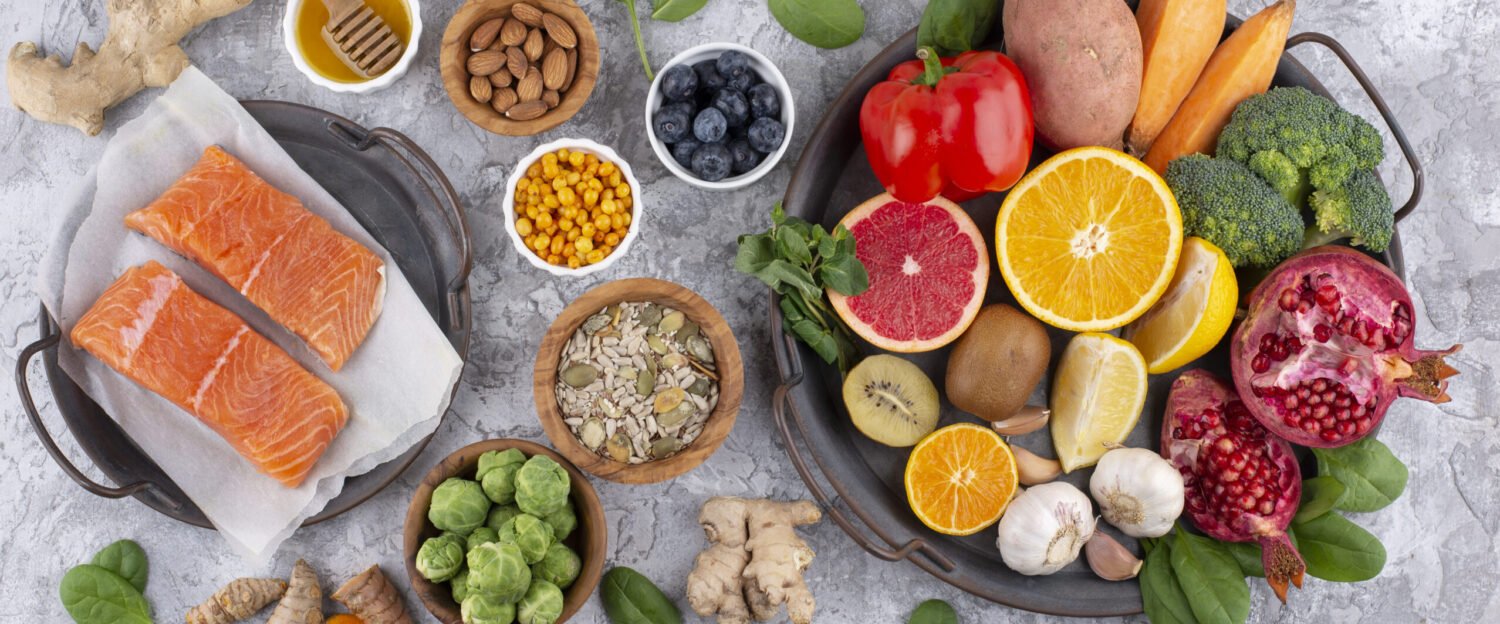Table of Contents

Homemade ghee:
Homemade ghee – After making a batch of homemade ghee, you can regenerate its rich flavor and texture by gently reheating it when needed, making it a versatile and long-lasting cooking fat and has a high smoke point, making it suitable for various cooking methods. Nutritionally, ghee is primarily composed of fats, with some minor amounts of other nutrients.
The quality of the butter you start with can impact the nutritional content of the ghee, so using high-quality, preferably grass-fed butter is often recommended. As with any food, moderation is key. While ghee can be a part of a balanced diet, it’s essential to be mindful of overall fat intake and to maintain a diverse and nutrient-rich diet.
How to Make ghee from milk cream at home?
When crafting homemade ghee, the essential procedure makes clarifying butter by eliminating its water content and milk solids. This leaves behind the pure butterfat. Making homemade ghee is a straightforward process that begins with melting high-quality unsalted butter in a saucepan. As the butter simmers, it goes through stages of foaming, bubbling, and clarity, with the milk solids gradually browning at the bottom.
Skimming off the foam and occasional stirring prevent sticking. The ghee transforms into a clear, golden liquid with a distinct aroma. Once the desired color is achieved, the heat is turned off. After a brief cooling period, the ghee is strained through a fine mesh strainer or cheesecloth into a clean jar, separating it from the browned milk solids. The ghee is then left to cool completely before sealing the jar. Homemade ghee is ready for storage in a cool, dark place, without the need for refrigeration.
Is Homemade Ghee Useful:
Homemade Ghee is a versatile cooking fat with a rich, nutty flavor and a high smoke point, making it suitable for various culinary applications. Here are several uses for ghee:
- Cooking and Sautéing:
- Ghee’s high smoke point (higher than regular butter) makes it an excellent choice for cooking and sautéing. It won’t burn as quickly as some other fats, making it ideal for high-heat cooking methods.
- Frying:
- Due to its high smoke point, ghee is suitable for frying foods. It imparts a delicious flavor to fried dishes.
- Frying vegetables, meat, Gulab jamun.
- Baking:
- Ghee can be used in place of butter or other fats in baking recipes. It adds a rich taste to baked goods and contributes to a moist texture.
- Roasting:
- Use ghee for roasting vegetables or meats to enhance flavor and achieve a beautiful, golden crust.
- Grilling:
- Brush ghee on meat, vegetables, or even bread before grilling to add a distinctive flavor and prevent sticking.
- Bulletproof Coffee:
- Some people incorporate ghee into their coffee as part of a “bulletproof coffee” recipe. Blending ghee into coffee can provide a creamy texture and sustained energy.
- Seasoning Popcorn:
- Drizzle melted homemade ghee over POPCORN for a rich and savory flavor. You can also add your favorite seasonings for a personalized popcorn experience.
- Curries and Indian Cuisine:
- Ghee is a staple in Indian cuisine, where it is used for cooking curries, dals, and various traditional dishes. It adds depth of flavor to these recipes.
- Use in Paneer butter masala, Dal Recipes, mutton masala curry
- Topping for Grains:
- Add a dollop of ghee to cooked rice, quinoa, or other grains for a rich and buttery flavor.
- EX: Chicken Biryani
- Stir-Frying:
- Ghee is an excellent choice for stir-frying due to its ability to withstand high temperatures without burning.
- Dipping Sauce:
- Warm ghee can be used as a dipping sauce for bread or other appetizers, offering a delicious alternative to traditional butter.
- Condiment:
- Spread ghee on toast or use it as a condiment for a unique and flavorful twist.
- I use in Sandwiches and even on pizza.
Best utensil to store ghee?
- Ghee prepared at home is safe to store in stainless steel or glass jars.
- Contact with other material can effect the quality of ghee
How long homemade ghee last?
Homemade ghee can be stored in best utensil for 3months in the pantry and up to 1year in refrigerator. If there is any difference in weird smell or change in color. Better don’t consume, avoid it.
How to Make Homemade ghee:

Homemade Ghee Process
Equipment
- Deep Thick Kadai
- Glass jar
- strainer
Ingredients
- 1 cup Unsalted butter (preferably high-quality)
Instructions
Preparation:
- Daily take out the cream on top layer of milk and store in refrigerator
Melting:
- Place the cream/butter in a heavy-bottomed pan or saucepan over medium heat.
Slow Heating:
- Allow the cream/butter to melt slowly. Once melted, reduce the heat to maintain a gentle simmer.
Simmering:
- Simmer the cream/butter on low heat. As it simmers, the water content will evaporate, and the milk solids will separate from the golden liquid.
Observation:
- As the ghee simmers, you’ll notice three distinct layers forming: foamy on top, clarified liquid in the middle, and milk solids at the bottom.
Foamy Stage:
- The foamy layer on top will gradually disappear, and the sound of simmering will change, indicating that the water content is evaporating.
Clarification:
- The butter will go from a clear liquid to a beautifully clear, golden liquid. At this point, you’ll see the milk solids at the bottom beginning to brown.
Milk Solids Browning:
- Once the milk solids turn a light golden brown and the liquid becomes clear, turn off the heat.
Straining:
- Allow the ghee to cool for a few minutes. Then, using a fine mesh strainer or cheesecloth, strain the liquid into a clean, dry glass jar. This removes the browned milk solids, leaving you with pure ghee.
Cooling and Storage:
- Let the ghee cool completely before sealing the jar. Store it at room temperature or in the refrigerator for an extended shelf life.
Notes
- Quality Ghee indicates crystallize form of ghee itseems
- Enjoy the rich, nutty aroma and golden goodness of your homemade ghee! Use it for cooking, frying, or as a flavorful substitute for butter in various dishes.
Nutrition:
The nutritional value of ghee is primarily composed of fats, with small amounts of other nutrients. It’s important to note that the exact nutritional content can vary depending on factors such as the quality of the butter used and the specific production process. Here’s a general overview of the nutritional value of ghee per tablespoon (approximately 14 grams):
- The nutritional value of homemade ghee is primarily composed of fats, with small amounts of other nutrients. It’s important to note that the exact nutritional content can vary depending on factors such as the quality of the butter used and the specific production process. Here’s a general overview of the nutritional value of ghee per tablespoon (approximately 14 grams):
- Calories: Around 120 calories.
- Total Fat: About 14 grams.
- Saturated Fat: Ghee is high in saturated fats, often making up around 9-10 grams per tablespoon. However, it’s worth noting that recent research has questioned the link between saturated fats and heart disease, suggesting that the impact may be more complex than previously thought.
- Cholesterol: Ghee contains cholesterol, with approximately 30 milligrams per tablespoon. Like saturated fats, the relationship between dietary cholesterol and blood cholesterol levels is a topic of ongoing research and discussion.
- Vitamin A: Ghee is a good source of vitamin A, which is a fat-soluble vitamin important for vision, immune function, and skin health.
- Vitamin E: Ghee contains small amounts of vitamin E, which has antioxidant properties and plays a role in maintaining skin health.
- Vitamin D: Ghee may contain trace amounts of vitamin D, but the levels can vary. Vitamin D is essential for bone health and also maintain immune function.
- Medium-Chain Triglycerides (MCTs): Ghee contains some MCTs, which are fats that are more easily absorbed and utilized by the body for energy.
- Lactose and Casein: Ghee is low in lactose and casein due to the clarification process, making it a potential option for individuals with lactose intolerance or dairy sensitivity.
It’s important to consume ghee in moderation, as it is calorie-dense. While ghee can be part of a balanced diet, it’s advisable to consider overall dietary patterns and individual health needs. If you have specific dietary concerns or health conditions, it’s recommended to consult with a healthcare professional.
